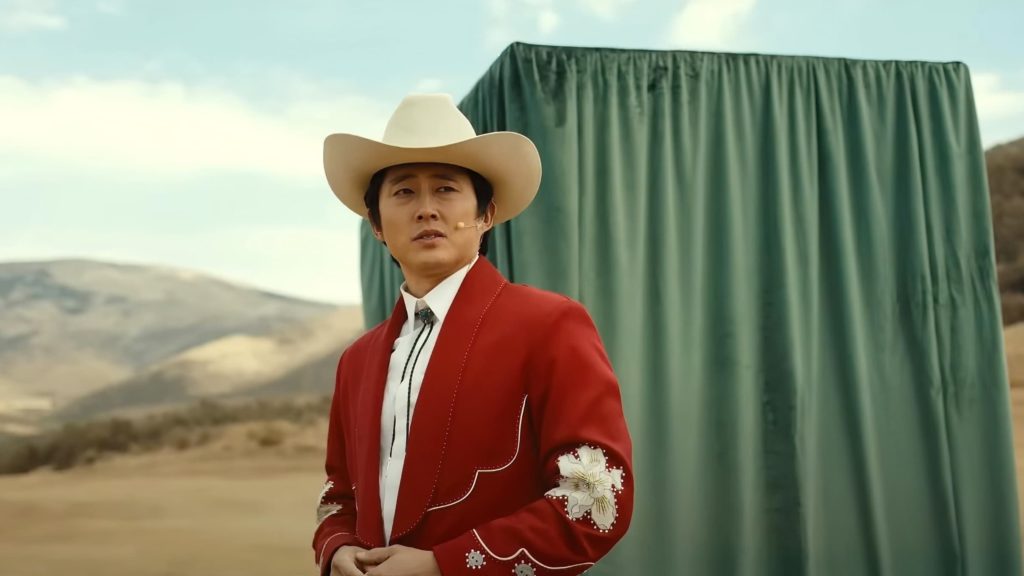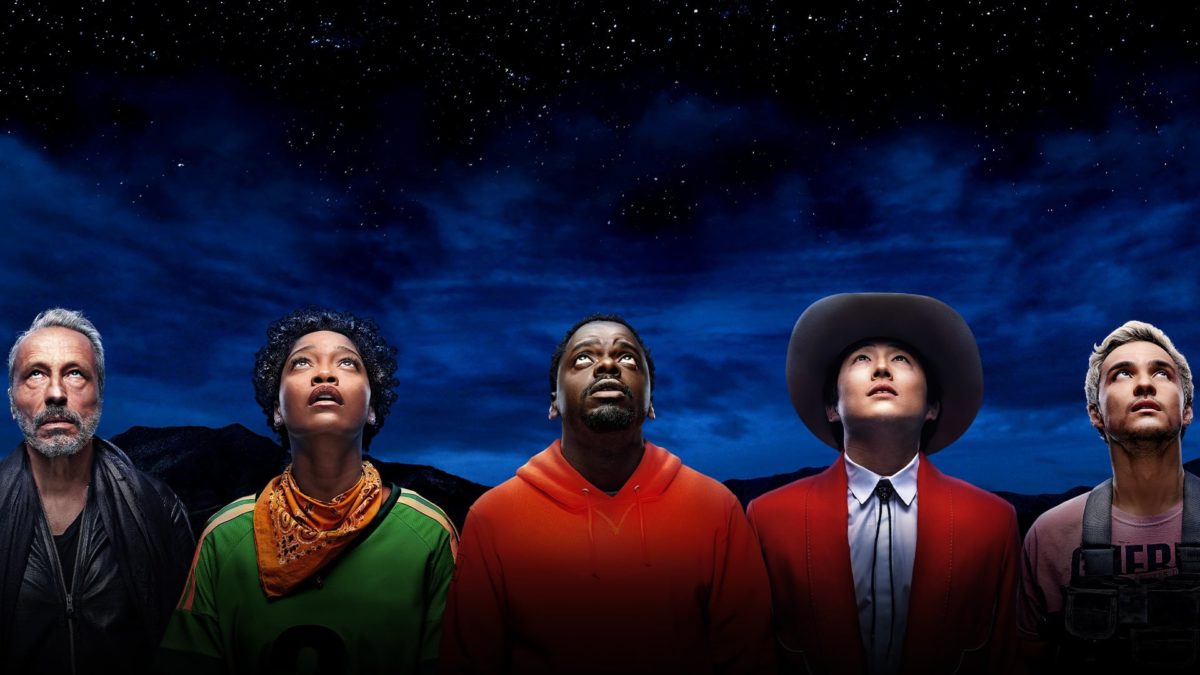I have polled several friends, and one consistent bit of feedback on Nope is that most people quite like some parts and quite dislike other parts. The curious thing is that there is a lot of disagreement about which parts work and which parts don’t. I think that speaks to a couple of things about Nope: First, it is an shapeshifting film, changing mood and form at least three times (it tellingly adopts the semi-trendy use of chapter breaks). Second, it is an uneven film, with those various pieces not quite fitting together into a whole.
Jordan Peele, now on his third outing as writer and directer of a horror (or horror-adjacent) film with a title uttered by a character in a moment of duress, hits some writing roadblocks that have grown more cumbersome in each outing: Overlong setup segments (more on this in a sec), thematically messy overreach, characters that never rise above flat sketches, too many half-assed piss-takes. I won’t go so far as to say that Peele has outed himself as a bad screenwriter, but I think a little bit of discipline and a co-writer might be in order for film number four.
And yet Peele remains an exciting scene-by-scene director, constructing some thrilling and gut-wrenching moments. Moments of Nope thorrified and astonished me in varying doses. The big visual payoff on the mysterious, destiny-altering force at the center of the film is haunting and almost beautiful.
So what does it add up to? I can’t say I quite know myself. Let’s walk through it.

We need to start with the bad, unfortunately. Us had its own issues with laborious setup, but that build-up was only a half hour and at least had a sense of momentum and the narrative hook of returning to a place of childhood trauma. Nope’s table setting lasts almost a full hour. And it’s really plodding, aimless storytelling: Some kooky stuff is happening back at the ranch. We better hang around until something big happens.
There’s a scene partway through this stretch that seems like it’s turning a corner. We see some creepy figures darting around shadows, not quite visible, a la the stalkers in Us. But it’s all a prank, and once I realized what the movie was doing, I started getting actively annoyed. Fake out scares are part of the horror tradition, but that on top of a tedious opening stretched my patience. Peele’s impish, sketch comedy instincts linger; in this case, for the worse.
It’s not simply the lack of stuff happening that makes this opening hour so brutal. It’s that every character and bit of exposition feels like a splash of paint rather than a thoughtful composition: One of the opening scenes highlights the protagonists’ connection to very early cinema, but it never comes to anything (other than thematic heft). There are hints of colorful, complex family dynamics that gets no dissection or angst. Sibling protagonists OJ (Daniel Kaluuya) and Em (Keke Palmer) have eye-popping charisma — Kaluuya in particular commands the screen in a low-key star turn — but not much development. They’re ciphers, not characters. The rest of the ensemble don’t even get as far as having identifiable traits. The opening act just kind of floats.

The movie’s turning point comes right around a flashback at the hour mark. We witness, from the edges, the dark, life-altering moment from the perspective of side character Jupe (Steven Yuen), hinted at earlier in the film. It’s the filming of a TV show gone nightmarishly wrong. It has no direct bearing on the plot, just a thematic one, but is unsettling enough to lurch the film out of its stasis.
It’s this and the following stretch that make up my favorite part of the movie. It’s a blast of almost eldritchian horror, set mostly on a rainy night. I was white-knuckle terrified. This segment also highlights the film’s sophisticated use of sound to accomplish all sorts of unsettling effects — some distant, off-screen screaming is as gut-wrenching as any on-screen violence could possibly be.
This is also where the film’s biggest thematic statement takes shape, though it is even messier and less coherent than Us, and certainly less potent than Get Out. Peele seems to equate humanity’s lizard-brain love of spectacle with destructive exploitation, literalizing the observation of violent spectacle into violence upon the viewer.
Peele takes a curious approach to the conclusion, shifting from rising horror to something that feels more like an adventure blockbuster or even a western. In broad daylight, we track the terrifying force that has haunted the movie. It feels almost too obvious to point out the Spielberg influences on this section, from the Jaws-esque obfuscation of the creature to the inverse-Close Encounters insistence on the dangers of looking up.

The final half hour is a pretty phenomenal continuous set piece, with lots of interesting moving parts that unfold with visual grace. Perhaps the most breathtaking sequences are the grand revelations of the film’s central terror, directly and squarely, as something almost abstractly beautiful. You could write a dissertation on the creature design on display in Nope’s conclusion, rife with animalistic strength. I see in it a biblical angel, and perhaps a movie camera, with floral and vaginal curves to its shape.
There’s a triumphant tone to Nope’s closing moments that seems to run perpendicular to the thematic thrust of the film. Why celebrate successful exploitation of wild creatures in the name of human spectacle when the rest of the movie argues at the senseless danger of that very thing? Perhaps Peele is leaning on some racial catharsis — a black man on a horse is still a central cinematic image 125 years after Eadweard Muybridge. But it rings discordant to me, a sense only amplified amidst buzz that Peele rewrote parts of the ending at Universal’s behest to make the film potentially franchisable. Yuck.
Overall, Nope is worth watching even in if it feels a bit sloppy and ragged. Its best moments are unsettling and gripping even if its worst moments — that interminable opening hour — are outright bad. It has a few too many untrimmed, misshapen ideas and images. But at least it has ideas and images.
- Review Series: 2022: Year in Film
- Review Series: Jordan Peele
Is It Good?
Good (5/8)
Dan is the founder and head critic of The Goods. Follow Dan on Letterboxd. Join the Discord for updates and discussion.

